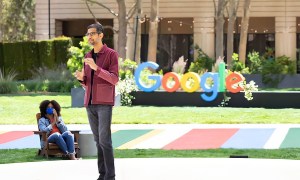

The first beta for Android 10 is finally here, serving as a peek at what to expect from the final version of Google’s next-generation mobile operating system. We still don’t know what Android 10 will be called, but we can see what it will bring to the table. The new operating system boasts plenty of great new features — and it’s likely that many more will be added to it over time as the betas progress.
Here are our five favorite features from the first Android 10 beta. We’ve also put together a roundup of the best Android apps and best Android games, if you’re looking to make the most of your Android device.
Faster Share UI! No more delays in sharing your photos

One of the most frustrating aspects of Android has always been sharing files and photos, because of the delay while waiting for the Share menu to load. Android 10 attempts to fix that. In the new sharing menu, you’ll get a quick view of exactly what’s being shared, plus a new “Sharing Shortcuts” mechanism, which allows apps to set up sharing targets ahead of time. This should hopefully speed up the overall sharing process.
No more apps tracking your location in the background

One of the biggest changes Google has made to Android’s privacy is that Android 10 will now offer better location settings for apps. You can tell apps exactly how often they’re allowed to access your location data. Like iOS, options include never giving location information, only giving it when the app is open, or always giving it when the app requests it, even in the background.
Depth from Portrait Mode photos can be utilized in third-party apps

Smartphone cameras are increasingly capturing more information when they take a photo — and in recent years, with the rise of dual-lens cameras, smartphones have begun capturing depth information. With Android 10, that information will be made available to third-party apps. That means you’ll be able to change up bokeh and depth styles in various other apps, if you so choose. It could make for much more customizable photo editing on smartphones, and this could also enable more augmented reality effects in photos.
Native HDR10+ support and AV1 mean higher quality video streaming

Android is also now getting native support for HDR10+ and the open source AV1 video codec, which means that media providers will be able to stream high-quality video while using less bandwidth. That’s good news for your data plan.
More options for resizing apps on foldable phones

Folding phones could well be the future, and Google is adding more support for foldable screens into Android. Google is changing how apps can be resized, meaning that Android devices with foldable screens should be a little more stable and a little less buggy when it comes to folding and unfolding those displays.
As the betas progress, keep an eye out for new features. If you want to try the beta for yourself, follow our guide on how to download and install Android 10 on a compatible phone.

